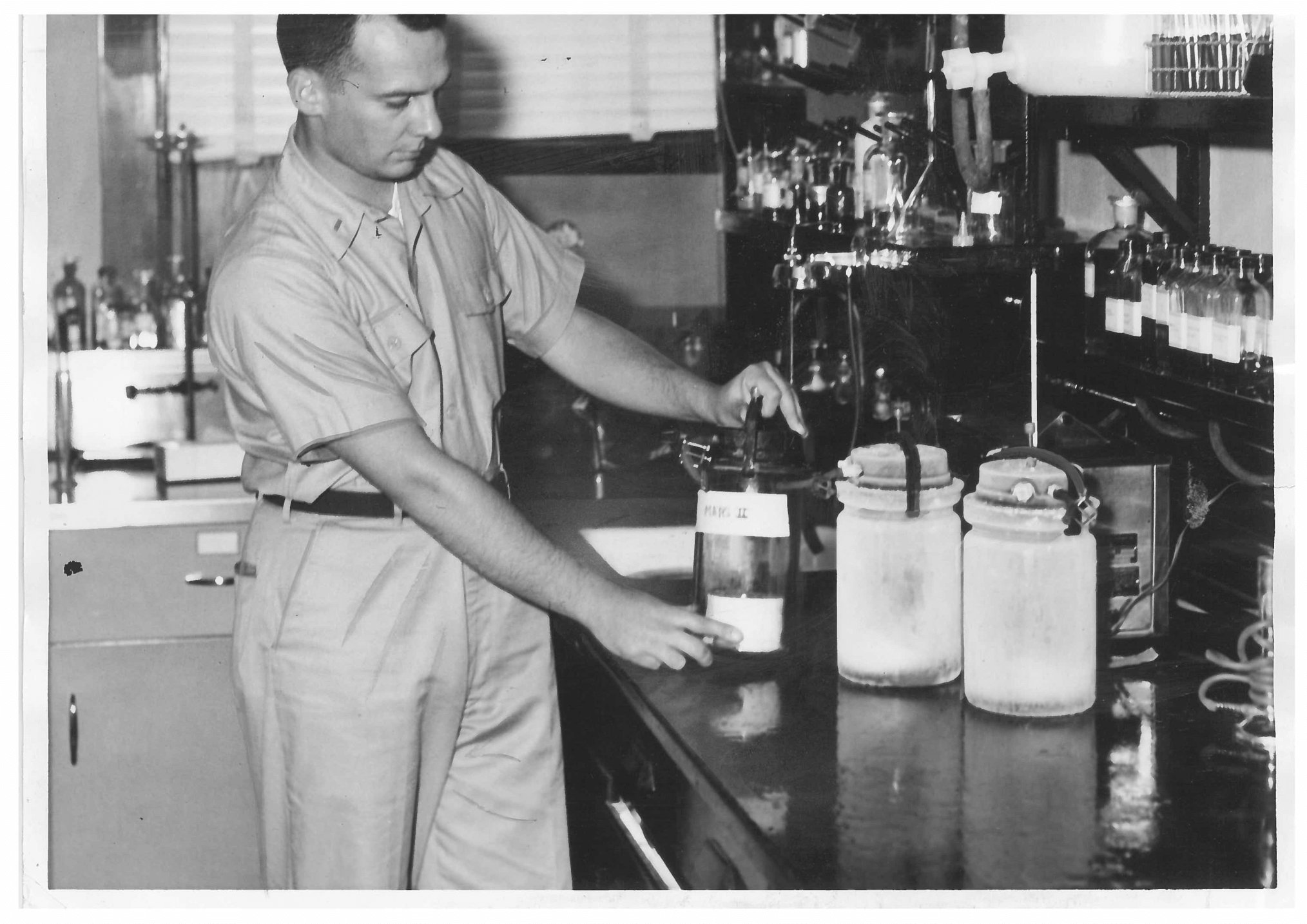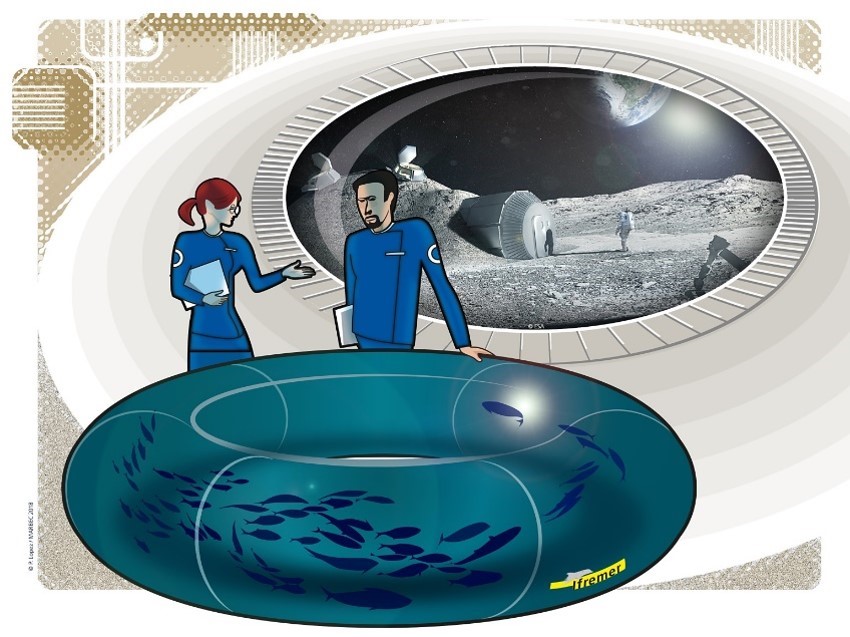How do we prepare for off-earth survival?
Three projects that illustrate themes explored in the first Off-Earth Atlas workshop, Seedling Biospheres.
I:
Closed Environments
 A uniformed Air Force scientist examines a Mars jar at the School of Aviation Medicine’s microbiology laboratory in 1957. (Source: AFHRA, Iris # 0480880)
A uniformed Air Force scientist examines a Mars jar at the School of Aviation Medicine’s microbiology laboratory in 1957. (Source: AFHRA, Iris # 0480880)
What’s inside a Mars jar?
Jordan BimmMany assume that research on potential extraterrestrial biology began at NASA in the 1960s. But a little-known military program started in the early 1950s created tiny simulations of extreme Martian conditions inside air-tight glass enclosures, which they called Mars jars. My project “follows the Mars jars” from their Cold War military origin into their wide use by civilian NASA scientists including astrobiologists and planetary scientists for research, training, and public relations. So, what’s inside a Mars jar? Much more than simulated regolith, thin CO2, and hardy Earth life. Every miniature world contains a grand vision of who and what the Red Planet is for.
Along with humans, fish could be the second vertebrate to be blasted into the solar system in the near future.
Cyrille Przybyla
Image: Aquaculture fish embryos after altered gravity experiment
(© Gilbert Dutto)
II: Surviving Off-Earth
The presence of a human community on the Moon or on Mars in long-term residence would require the establishment of a production unit allowing partial or total food autonomy in addition to freight deliveries. One of the primary purposes of a bioregenerative life support system is to provide food sources for crewed missions by utilizing in situ resources and converting wasted molecules into food biomass.
 Lunar Hatch Programme: Studying the space aquaculture feasibility on the Moon (artistic view © Pierre Lopez)
Lunar Hatch Programme: Studying the space aquaculture feasibility on the Moon (artistic view © Pierre Lopez) More available than arable land, water would be present on several planetary bodies in our solar system. And most of the time it's salt water. The nutritional quality of aquatic organisms (invertebrates, fish, algae) makes them potential candidates for supplementing the nutrients provided by terrestrial organisms, such as plants or insects. Trying to plant a biosphere on another terrestrial planet highlights Earth's challenges of producing healthy food with little input and little waste. The Lunar Hatch program is investigating the first step in exporting our aquatic biosphere to space by studying the feasibility of a journey of aquaculture embryos from Earth to the Moon.
Sowing, always sowing, even in space is probably the destiny of humanity.
A) Random Positioning Machine with a CubeSat exposed for 39 hours of simulated microgravity with European seabass embryos
B) Aquatic rotor (from 1 g to 5 g) with experimental tanks in triplicate with European seabass embryos (© Véronique Ribière)
III: No Longer Human?
Kathleen BrysonThere are crucial evolutionary considerations for First Contact with aliens and long-haul space flights, including cryosleep and the hypothesised self-sustaining ecosystem of a generation ship. Principles of convergent evolution applied to long-living cultural organisms predict behavioural similarities between us and speculative extraterrestrial organisms. Although complex aliens may well have similar tendencies to favour ingroups, and to isolate outgroups when advantageous, they would also likely have the same byproduct empathy from required cooperation as social animals that enables us to include pets, plants, and even robots in our social circle.
“The Green Man (Martian Intent on Colonisation Lands in a Remote Part of Alaska Untouched by Human Inhabitation and is Confused by the Lack of Formal Capitalistic Hierarchy When He Demands of the Animals to be Taken to a Leader)” by Kathleen Bryson, 2018.

